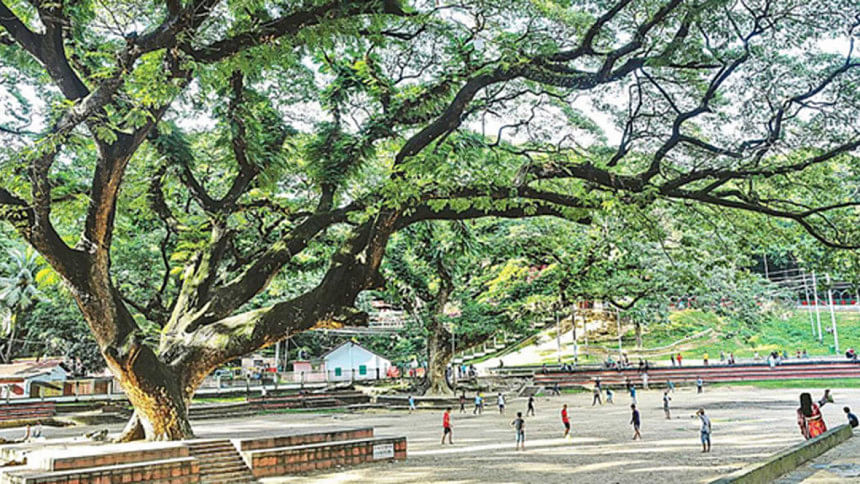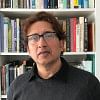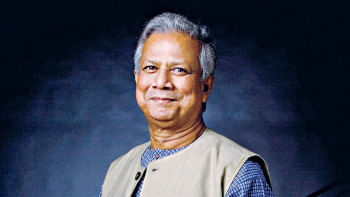Could public consciousness of history be a measure of social progress?

For quite some time now, people have been discussing if there are more on-the-ground, inclusive ways to measure a country's progress, rather than supra-quantitative metrics like GDP. So what could be other possible yardsticks? In an earlier column, I proposed a few "experiential indicators" of well-being, such as the quality of public transportation, walkability, waste management, public spaces, and internet accessibility.
Today, I would like to propose a qualitative indicator of social progress: the public consciousness of history (PCH).
First, it would help to explain the relationship between historical consciousness and the idea of nationhood. One of the principal ways the nation-state establishes its authority is by demarcating a territory for the nation. But geographic boundaries, as Ernest Renan would say, is hardly enough—nor are common languages, religious beliefs, and ethnicities. A historical consciousness of unity, centring on both real and imaginary events or places, is assumed to buttress the concept of nationhood. Nation-states exploit this type of consciousness rather conservatively, like a canopy holding together different ethnicities, political persuasions, religious beliefs, and economic conditions under the banner of one nation.
Dominant groups often reinforce and perpetuate this consciousness on behalf of the state. For the French, the French Revolution is sacrosanct. For Bangladeshis, it is 1971. These are part of macrohistories that are expected to galvanise a people with a common national purpose. How people interpret and relate to these types of macrohistories can determine the way they imagine their nationhood and perceive themselves on the world stage.
But PCH, I propose, is a different kind of dynamic, fluid, and organic microhistory that can shape and condition the daily lives of people on various scales. People may or may not develop a meaningful consciousness of microhistories, depending on how economy, society, culture, and education percolate in their imagination of themselves in relation to their idea of the nation. These types of histories can serve as bottom-up strategies for people to negotiate their immediate worlds, their built environments, their natural ecosystems, etc. Are we talking about a society and its general well-being when we are discussing the quality of its public awareness of microhistories?
How, then, do we convincingly measure the state of such an awareness? For example, would assessing how the Dhaka University community reacts to the slated demolition of a historically significant building complex, like the TSC, reveal the state of PCH in Bangladesh?
Does Bangladesh fare well in PCH? Let us ask a few rhetorical questions. Why does the public mostly remain silent when Chattogram's historic area—Central Railway Building (CRB, established in 1872), a rare ecology of centuries-old trees and hilly terrain—is chosen as the site for a 500-bed hospital? How would the ambulance sirens impact this area if this hospital is built after all? Why is there a blatant lack of public empathy when government agencies cut down "witness trees" (trees present during the surrender of the Pakistan Army) at Suhrawardy Udyan in the name of developing the historic park? Why are heritage buildings across the country routinely torn down to develop multi-storey flats or bland office blocks? Why is there a boat club (now infamous) built on vital wetlands connected to the Turag River?
How does one reconcile Bangladesh's consistent economic growth with a lack of broad public awareness of both the built and natural environments? What is the nature of the relation between economic growth and a nation's collective mental "evolution"?
If Bangladesh has a low level of PCH, let us consider a few possible reasons why. First is geography. The deltaic Bengal's geography—crisscrossed by rivers and canals, always changing course—is constantly shifting, and does not allow any permanent symbols, edifices, and allegiances. In this process, as Akbar Ali Khan implies in "Discovery of Bangladesh" (1996), grassroots institutions that could foster a consciousness of history could not take hold in Bengal.
Second is East Bengal's agrarian past. As French sociologist Pierre Bourdieu's study of Algerian peasants suggests, within subsistence agrarian economies, the repetitive basis of agricultural activities follows Mother Nature's cycles. Such a similarity has traditionally conditioned rural people to conceive a very localised and fatalistic notion of time. This pre-industrial idea of cyclical temporality is not conducive to a broader historical consciousness. In "Bangali Musolmaner Mon" ("The Mind of Bengali Muslims," 1976), Ahmed Sofa examined the peculiar ahistoricity that complicates—or rather simplifies—the cultural imagination of Bengali Muslims.
Third, the lack of stone in a deltaic land failed to create an enduring building culture around which the agrarian people of Bengal could develop a particular historical consciousness. Instead, Bengal's traditional huts were built with perishable materials like mud and bamboo. To develop a dynamic sense of historical awareness, people felt the need of powerful, tangible, and time-defying symbols with a lot of myths around them. Bengal's essential stories are about the heroism and struggles of the peasant, the boatman, the fisherman, and the rebellious yokel rising against the village morol, not about Kantaji Temple in Dinajpur or the 60-Dome Mosque in Bagerhat. These buildings are magnificent, but they are not part of Bengal's quintessential mental universe and did not shape the worldviews of Bengal's agrarian society. When we think of the archetypal Bengal, deep down it is still the tranquil sweep of the green paddy field, occasionally punctuated by trees and the homestead. However, it is slowly changing with the chaotic urbanisation of rural Bangladesh.
Bangladeshis have inherited the burden of the ahistorical sensibility of Bengal's agrarian legacy. This is by no means unique to Bangladesh. Many countries with a strong agrarian past demonstrate similar national attitudes. The problem is not with the attitude itself, but being stagnant about it.
We now live in a rapidly modernising, urbanising, and interconnected world. How do we enrich our agrarian inheritance with a modern notion of historical consciousness (by no means uncontested), one that would compel the masses to share the burden of debating history's symbols, contexts, and narratives that matter?
The first step should be to reimagine history as a discipline from primary school to the university level with a new purpose and vigour. Both history and its contestations should be part of a new curriculum. I recall my own undergraduate years in Dhaka during the 1980s. History students were frequently ridiculed, as if they could not find a more "useful" subject to study. The pervasive impression was that there were no job prospects for a history major. But, of course, the problem was not the discipline itself, but how we as a people imagine the humanities and their values in society. Furthermore, how history was taught as an uncontested and linear chronicle was part of the disciplinary failure.
I was browsing through the website of the Department of History at the University of Dhaka. Most full professors have zero content under their publication heading. There are no hints at their disciplinary expertise. Nor are there any syllabi, nor content on recent doctoral work. Across the website, there is no trace of debating history's disciplinary shifts since the publication of EH Carr's "What is History?" (1961) and the epistemological challenges of postmodernism, postcolonialism, and post-structuralism throughout the last decades of the 20th century. The quality of research and reputation matter in the ranking of universities.
Let us end with an optimistic note. As I have seen in Bangladesh in recent times, the new generation of students are hungry for knowledge that empowers them to think, contest, and deliver. It is important that we discover this hunger at every level of learning as a national asset. The University Grants Commission must re-evaluate the very notion of the "quality of higher education" to create a history-conscious learning community that feels the need to continuously examine the complex relationship between the past and the future.
Adnan Zillur Morshed is an architect, architectural historian, and professor. He teaches in Washington, DC, and also serves as executive director of the Centre for Inclusive Architecture and Urbanism at BRAC University. Email: [email protected]

 For all latest news, follow The Daily Star's Google News channel.
For all latest news, follow The Daily Star's Google News channel. 



Comments